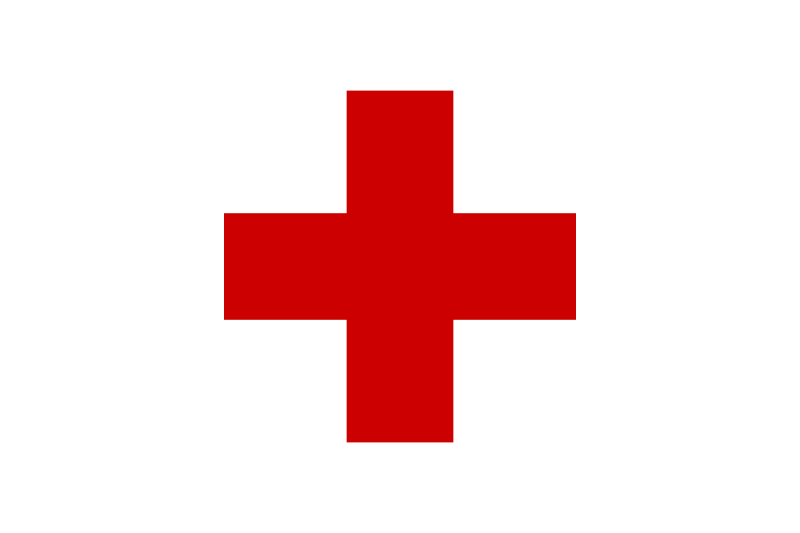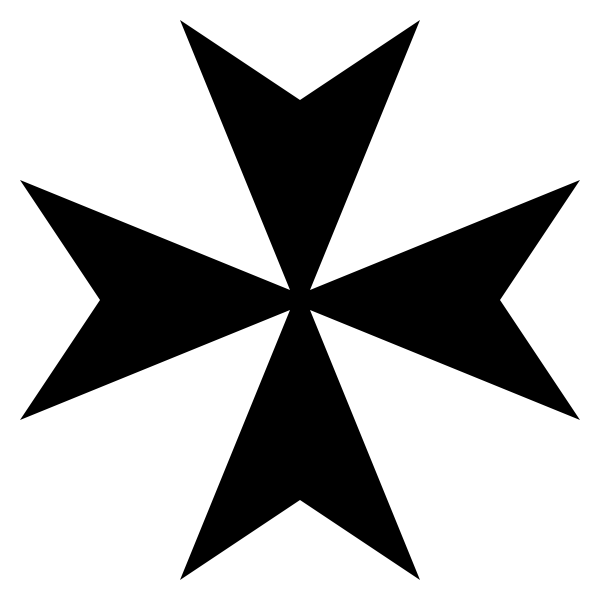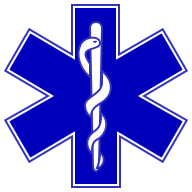First aid: Difference between revisions
| Line 93: | Line 93: | ||
===Ireland=== | ===Ireland=== | ||
In Ireland, the workplace qualification is the Occupational First Aid Certificate. The [[Health and Safety | In Ireland, the workplace qualification is the Occupational First Aid Certificate. The [[Health and Safety Authority]] issue the standards for fisrt aid at work and hold a register of qualified instructors, examiners and organisations that can provide the course. The certificate is awarded after a three day course and is valid for three years from date of issue. Organisations offering the certificate include, Irelands largest first aid organisation, the [[Order of Malta Ambulance Corps]], the [[St. John Ambulance Brigade of Ireland|St John Ambulance Brigade]] and the [[Irish Red Cross]]. | ||
===United Kingdom=== | ===United Kingdom=== | ||
Revision as of 13:48, 26 January 2009
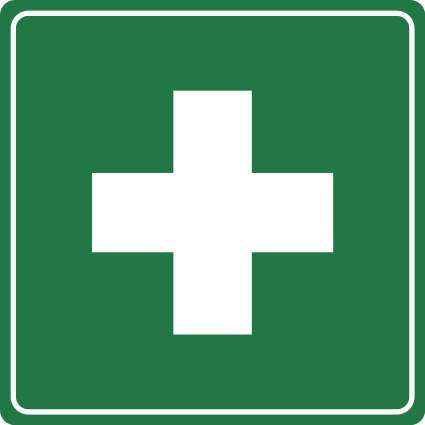
|
WikiDoc Resources for First aid |
|
Articles |
|---|
|
Most recent articles on First aid |
|
Media |
|
Evidence Based Medicine |
|
Clinical Trials |
|
Ongoing Trials on First aid at Clinical Trials.gov Clinical Trials on First aid at Google
|
|
Guidelines / Policies / Govt |
|
US National Guidelines Clearinghouse on First aid
|
|
Books |
|
News |
|
Commentary |
|
Definitions |
|
Patient Resources / Community |
|
Patient resources on First aid Discussion groups on First aid Directions to Hospitals Treating First aid Risk calculators and risk factors for First aid
|
|
Healthcare Provider Resources |
|
Causes & Risk Factors for First aid |
|
Continuing Medical Education (CME) |
|
International |
|
|
|
Business |
|
Experimental / Informatics |
Editor-In-Chief: C. Michael Gibson, M.S., M.D. [1]
Please Take Over This Page and Apply to be Editor-In-Chief for this topic: There can be one or more than one Editor-In-Chief. You may also apply to be an Associate Editor-In-Chief of one of the subtopics below. Please mail us [2] to indicate your interest in serving either as an Editor-In-Chief of the entire topic or as an Associate Editor-In-Chief for a subtopic. Please be sure to attach your CV and or biographical sketch.
Overview
First aid is the provision of limited care for an illness or injury, which is provided, usually by a lay person, to a sick or injured patient until definitive medical treatment can be accessed, or until the illness or injury is dealt with (as not all illnesses or injuries will require a higher level of treatment). It generally consists of series of simple, sometimes life saving, medical techniques, that an individual, either with or without formal medical training, can be trained to perform with minimal equipment.
First aid can also be performed on animals other than humans, although this article refers specifically to human first aid.
History
The Knights Hospitaller were probably the first to specialize in battlefield care for the wounded. Similarly, knights founded the Order of St. John in the 11th century to train other knights specifically how to treat common battlefield injuries.[1] St. John Ambulance was formed in 1877 to teach first aid (a term devised by the order) in large railway centres and mining districts. The order and its training began to spread throughout the British Empire and Europe.[2] As well, in 1859 Henry Dunant helped organize villagers in Switzerland to help victims of the Battle of Solferino. Four years later, four nations met in Geneva and formed the organization which has grown into the Red Cross. Developments in first aid and many other medical techniques have been fueled in large by wars: the American Civil War prompted Clara Barton to organize the American Red Cross.[3] Today, there are several groups that promote first aid, such as the military and the Scouting movement. New techniques and equipment have helped make today’s first aid simple and effective.
Aims
The 3 main aims of first aid, commonly referred to as the “3 Ps” are:
- Preserve life
- Prevent further injury
- Promote recovery
In addition, some trainers may also advocate a 4th ‘P’ - Protect yourself, although this is not technically an ‘aim’ of providing first aid, and some people would consider that it is adequately covered by ‘Prevent further injury’ as this is to the casualty, yourself or others.
Training
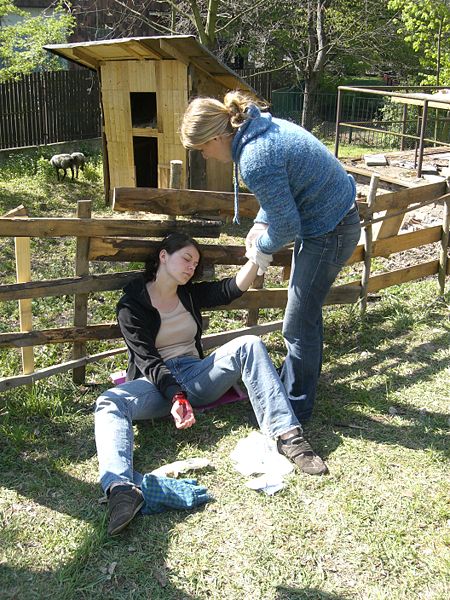
Much of first aid is common sense, and people are almost certain to learn some elements as they go through their life (such as knowing to apply an adhesive bandage to a small cut on a finger).
However, effective life-saving first aid requires hands-on training by experts, especially where it relates to potentially fatal illnesses and injuries, such as those that require Cardiopulmonary resuscitation (CPR), as the procedures may be invasive, and carry a risk of further injury to the patient - which the ‘3 aims’ of first aid above, clearly try to avoid.
As with any training, it is more useful if it occurs before an actual emergency, although in many countries, emergency ambulance dispatchers will give basic first aid instructions over the phone while the ambulance is on its way.
To be adequately trained, a person must attend a course (hopefully leading to a qualification recognised in their country), but then, due to regular changes in procedures and protocols, based on updated clinical knowledge, must attend regular refresher courses or re-certification in order to ensure they are doing the best for their patient (and in some countries, to minimise the chance of being held liable for further injury or deterioration).
Training in first aid is often available through community organizations such as the Red Cross and St. John Ambulance, or through commercial providers, who will train people for a fee. This commercial training is most common for training of employees to perform first aid in their workplace. Many community organisations, such as the ones above, also provide a commercial service, which complements their community programmes.
Key First Aid Skills
There are certain skills which can be regarded as core, regardless of where or how first aid is taught. First aiders are taught to focus on the "ABC"s of first aid before giving additional treatment:
- Airway
- Breathing
- Circulation
This means any first aider should first evaluate and attempt to treat problems with a casualty's airway. If the airway is open the first aider should then evaluate and attempt to treat problems with breathing followed by circulation (circulation of blood). Some instructors add a fourth step of "D" for Deadly Bleeds which is technically already included in the circulation check. Variations on techniques to evaluate and maintain the ABCs depend on the skill level of the first aider. Once the ABCs are secured first aiders can begin more advance treatment.
Some countries teach the same order of priority using the "3 Bs":
- Breathing
- Bleeding
- Bones
This means that any first aider should first seek to treat any problems with Breathing, before attempting to deal with a bleed or broken bone (which is not to say that they should not be considered at the time - such as in the case of a spinal injury, where a variation on the technique can be used to open the airway).
Preserving Life
As the key skill to first aid is preserving life, the single most important training a first aider can receive is in the primary diagnosis and care of an unconscious or unresponsive patient. The most common mnemonic used to remember the procedure for this is ABC, which stands for Airway, Breathing and Circulation.
In order to preserve life, all persons require to have an open airway - a clear passage where air can move in through the mouth or nose through the pharynx and down in to the lungs, without obstruction. Conscious people will maintain their own airway automatically, but those who are unconscious (with a GCS of less than 8) may be unable to maintain a patent airway, as the part of the brain which autonomously controls in normal situations may not be functioning.
If an unconscious patient is lying on his or her back, the tongue may fall backward, obstructing the oropharynx (sometimes incorrectly called “swallowing” the tongue). This can be easily rectified by a first aider tipping the head backwards, which mechanically lifts the tongue clear.[4]
If the patient was breathing, a first aider would normally then place them in the recovery position, with the patient leant over on their side, which also has the effect of clearing the tongue from the pharynx. It also avoids a common cause of death in unconscious patients, which is choking on regurgitated stomach contents.
The airway can also become blocked through a foreign object becoming lodged in the pharynx or larynx, commonly called choking. The first aider will be taught to deal with this through a combination of ‘back slaps’ and ‘abdominal thrusts’.
Once the airway has been opened, the first aider would assess to see if the patient is breathing. If there is no breathing, or the patient is not breathing normally, such as agonal breathing, the first aider would undertake what is probably the most recognised first aid procedure - Cardiopulmonary resuscitation or CPR, which involves breathing for the patient, and manually massaging the heart to promote blood flow around the body.
Promoting Recovery
The first aider is also likely to be trained in dealing with injuries such as cuts, grazes or broken bones. They may be able to deal with the situation in its entirety (a small adhesive bandage on a paper cut), or may be required to maintain the condition of something like a broken bone, until the next stage of definitive care (usually an ambulance) arrives.
First Aid symbols
Although commonly associated with first aid, the symbol of a red cross is an official protective symbol of the Red Cross. According to the Geneva Conventions and other international law, the use of this and similar symbols is reserved for official agencies of the International Red Cross and Red Crescent, and as a protective emblem for medical personnel and facilities in combat situations. Use by any other person or organization is illegal, and may lead to prosecution.
The internationally accepted symbol for first aid is the white cross on a green background shown at the start of the page.
Some organizations may make use the Star of Life, although this is usually reserved for use by Ambulance services, or symbols such as the Maltese Cross such as the Order of Malta Ambulance Corps and St John Ambulance, or other symbols.
-
ISO First Aid Symbol
-
Symbol of the Red Cross
-
Maltese Cross
-
Star of life
First Aid training around the world
Australia
In Australia, Nationally recognised First Aid certificates may only be issued by registered training organizations who are accredited on the National Training Information System (NTIS). Most First Aid certificates are issued at one of 3 levels:
- Level 1 (or “Basic First Aid”, or “Basic Life Support”): is a 1-day course covering primarily life-threatening emergencies: CPR, bleeding, chocking and other life-threatening medical emergencies.
- Level 2 (“Senior First Aid”) is a 2 day course that covers all the aspects of training in Level 1, as well as specialised training for treatment of burns, bites, stings, electric shock and poisons. Level 2 reaccreditation is a 1 day course which must be taken every 3 years.
- Level 3 (“Occupational First Aid”) is a 4-day course covering advanced first aid, use of oxygen and Automated external defibrillators and documentation. It is suitable for workplace First Aiders and those who manage First Aid facilities.
Other courses outside these levels are commonly taught, including CPR-only courses, Advanced Resuscitation, Remote Area or Wilderness First Aid, Administering Medications (such as salbutamol or the Epi-Pen) and specialised courses for parents, school teachers, community first responders or hazardous workplace first aiders.
Canada
In Canada, first aid certificates are awarded by one of several organizations including the Red Cross, the Lifesaving Society of Canada, St. John Ambulance, the Heart and Stroke Foundation, and Ski Patrol. Workplace safety regulations vary depending on occupation. Many workplaces opt to have their employees trained in Standard First Aid (see below).
- Emergency First Aid: is an 8-hour course covering primarily life-threatening emergencies: CPR, bleeding, choking and other life-threatening medical emergencies.
- Standard First Aid: is a 16-hour course that covers the same material as Emergency First Aid and will include training for some, but not all, of the following: breaks; burns; poisons, bites and stings; eye injuries; head and neck injuries; chest injuries; wound care; emergency child birth; and multiple casualty management.
- Medical First Responder (BTLS - known by different names among different Canadian organizations): is a 40 hour course. It requires Standard First Aid certification as a prerequisite. Candidates are trained in the use of oxygen, Automated external defibrillators, airway management, and the use of additional emergency equipment.
CPR certification in Canada is broken into several levels. Depending on the level, the lay person will learn CPR and choking procedures for adults, children, and infants.
CPR H.C.P. (Health Care Professional) also provides training on artificial respiration, the use of bag valve masks, and suction. This level of qualification is usually not offered to the general public.
Ireland
In Ireland, the workplace qualification is the Occupational First Aid Certificate. The Health and Safety Authority issue the standards for fisrt aid at work and hold a register of qualified instructors, examiners and organisations that can provide the course. The certificate is awarded after a three day course and is valid for three years from date of issue. Organisations offering the certificate include, Irelands largest first aid organisation, the Order of Malta Ambulance Corps, the St John Ambulance Brigade and the Irish Red Cross.
United Kingdom
In the United Kingdom, there are two main types of first aid courses offered. An “Emergency Aid for Appointed Persons” course typically lasts one day, and covers the basics, focusing on critical interventions for conditions such as cardiac arrest and severe bleeding, and is usually not formally assessed. A “First Aid at Work” course is usually a four-day course (two days for a re-qualification) that covers the full spectrum of first aid, and is formally assessed by recognised Health and Safety Executive assessors. Certificates for the “First Aid at Work” course are issued by the training organisation and are valid for a period of three years from the date the delegate passes the course. Other courses offered by training organisations such as St. John Ambulance, St. Andrew’s Ambulance Association or the British Red Cross include Baby & Child Courses, manual handling, people moving, and courses geared towards more advanced life support, such as defibrillation and administration of medical gases such as oxygen & entonox).
Specific first aid disciplines
There are several types of first aid (and first aider) which require specific additional training. These are usually undertaken to fulfill the demands of the work or activity undertaken.
- Aquatic/Marine first aid - Usually practised by professionals such as lifeguards or in diver rescue, and covers the specific problems which may be faced after water-based rescue.
- Battlefield first aid - This takes in to account the specific needs of treating wounded combatants and non-combatants during armed conflict.
- Hyperbaric first aid - Which may be practised by SCUBA diving professionals, who need to treat conditions such as the bends.
- Oxygen first aid - Providing oxygen to casualties who suffer from conditions resulting in hypoxia.
- Wilderness first aid is the provision of first aid under conditions where the arrival of emergency responders or the evacuation of an injured person may be delayed due to constraints of terrain, weather, and available persons or equipment. It may be necessary to care for an injured person for several hours or days.
Conditions that often require first aid
Also see medical emergency.
- Altitude sickness, which can begin in susceptible people at altitudes as low as 5,000 feet, can cause potentially fatal swelling of the brain or lungs.
- Anaphylaxis, a life-threatening condition in which the airway can become constricted and the patient may go into shock. The reaction can be caused by a systemic allergic reaction to allergens such as insect bites or peanuts. Anaphylaxis is initially treated with injection of epinephrine.
- Battlefield First aid - This protocol refers to treating shrapnel, gunshot wounds, burns, bone fractures, etc. as seen either in the ‘traditional’ battlefield setting or in an area subject to damage by large scale weaponry, such as a bomb blast or other terrorist activity.
- Bone fracture, a break in a bone initially treated by stabilizing the fracture with a splint.
- Burns, which can result in damage to tissues and loss of body fluids through the burn site.
- Choking, blockage of the airway which can quickly result in death due to lack of oxygen if the patient’s trachea is not cleared, for example by the Heimlich Maneuver.
- Childbirth.
- Cramps in muscles due to lactic acid build up caused either by inadequate oxygenation of muscle or lack of water or salt.
- Joint dislocation.
- Diving disorders resulting from too much pressure.
- Near drowning or asphyxiation.
- Gastrointestinal bleeding.
- Gender-specific conditions, such as dysmenorrhea and testicular torsion.
- Heart attack, or inadequate blood flow to the blood vessels supplying the heart muscle.
- Heat stroke, also known as sunstroke or hyperthermia, which tends to occur during heavy exercise in high humidity, or with inadequate water, though it may occur spontaneously in some chronically ill persons. Sunstroke, especially when the victim has been unconscious, often causes major damage to body systems such as brain, kidney, liver, gastric tract. Unconsciousness for more than two hours usually leads to permanent disability. Emergency treatment involves rapid cooling of the patient.
- Heat syncope, another stage in the same process as heat stroke, occurs under similar conditions as heat stroke and is not distinguished from the latter by some authorities.
- Heavy bleeding, treated by applying pressure (manually and later with a pressure bandage) to the wound site and elevating the limb if possible.
- Hyperglycemia, or diabetic coma.
- Hypoglycemia, or insulin shock.
- Hypothermia, or Exposure, occurs when a person’s core body temperature falls below 33.7°C (92.6°F). First aid for a mildly hypothermic patient includes rewarming, but rewarming a severely hypothermic person could result in a fatal arrhythmia, an irregular heart rhythm.
- Insect and animal bites and stings.
- Muscle strain.
- Poisoning, which can occur by injection, inhalation, absorption, or ingestion.
- Seizures, or a malfunction in the electrical activity in the brain. Three types of seizures include a grand mal (which usually features convulsions as well as temporary respiratory abnormalities, change in skin complexion, etc) and petit mal (which usually features twitching, rapid blinking, and/or fidgeting as well as altered consciousness and temporary respiratory abnormalities).
- Sprain, a temporary dislocation of a joint that immediately reduces automatically but may result in ligament damage.
- Stroke, a temporary loss of blood supply to the brain.
- Sucking chest wound, a life threatening hole in the chest which can cause the chest cavity to fill with air and prevent the lung from filling, treated by covering with an occlusive dressing to let air out but not in.
- Toothache, which can result in severe pain and loss of the tooth but is rarely life threatening.
- Wounds and bleeding, including laceration, incision and abrasion, and avulsion.
See also
- Abdominal thrusts
- Ambulance
- Artificial respiration
- Cardiopulmonary resuscitation (CPR)
- Occlusive dressing
- Oxygen first aid
- Triage
- Tourniquet
- Recovery position
References
- ↑ First Aid: From Witchdoctors & Religious Knights to Modern Doctors, retrieved December 10, 2006.
- ↑ Industrial Revolution: St. John Ambulance, retrieved December 10, 2006.
- ↑ American Red Cross -- Museum, retrieved December 10, 2006.
- ↑ St. John Ambulance (2006). First Aid Training:First on the Scene. Student Reference Guide Activity book. St. John Ambulance. page 23-7. ISBN 1-894070-56-9
External links
- U.S.A. Center for Disease Control first aid
- European Reference Centre for First Aid Education
- Order of Malta Ambulance Corps
- [http://www.hsa.ie The Irish Health and Safety Authority
ar:إسعافات أولية
cs:První pomoc
da:Førstehjælp
de:Erste Hilfe
eo:Sukuro
id:Pertolongan Pertama Pada Kecelakaan
it:Primo soccorso
ka:პირველადი სამედიცინო დახმარება
lb:Éischt Hëllef
nl:Eerste Hulp bij Ongelukken
no:Førstehjelp
simple:First aid
sk:Prvá pomoc
sl:Prva pomoč
fi:Ensiapu
sv:Första hjälpen
